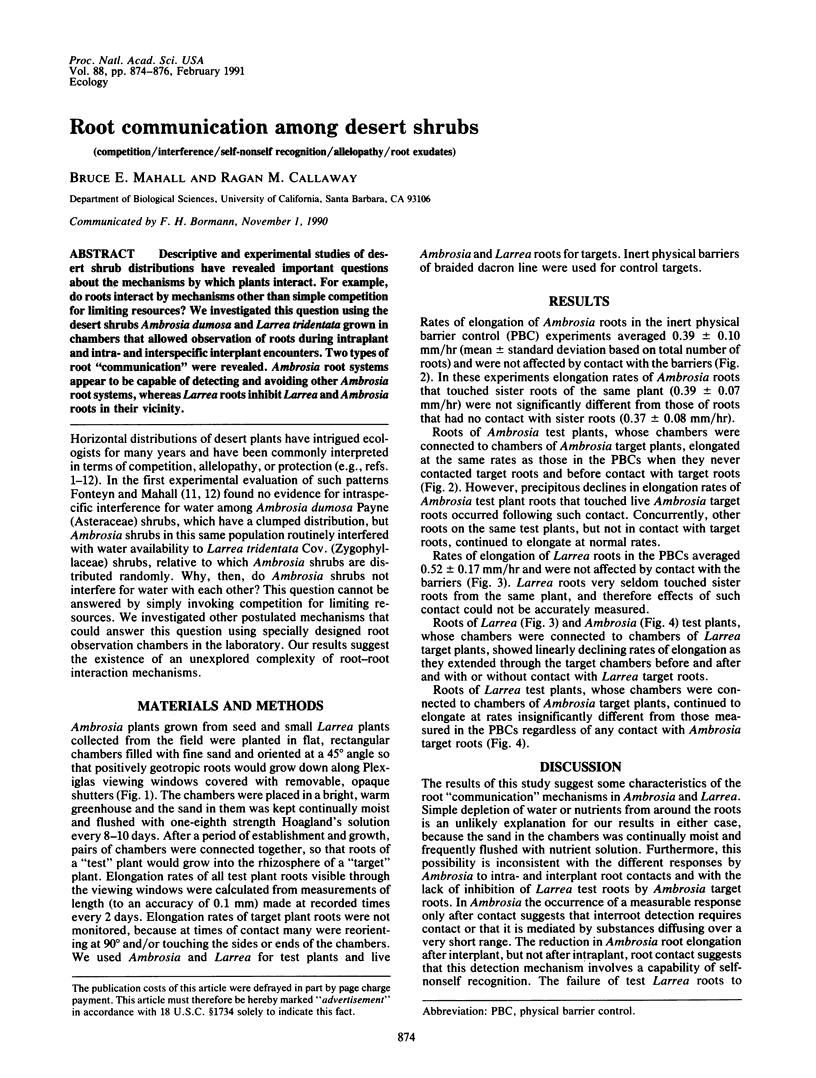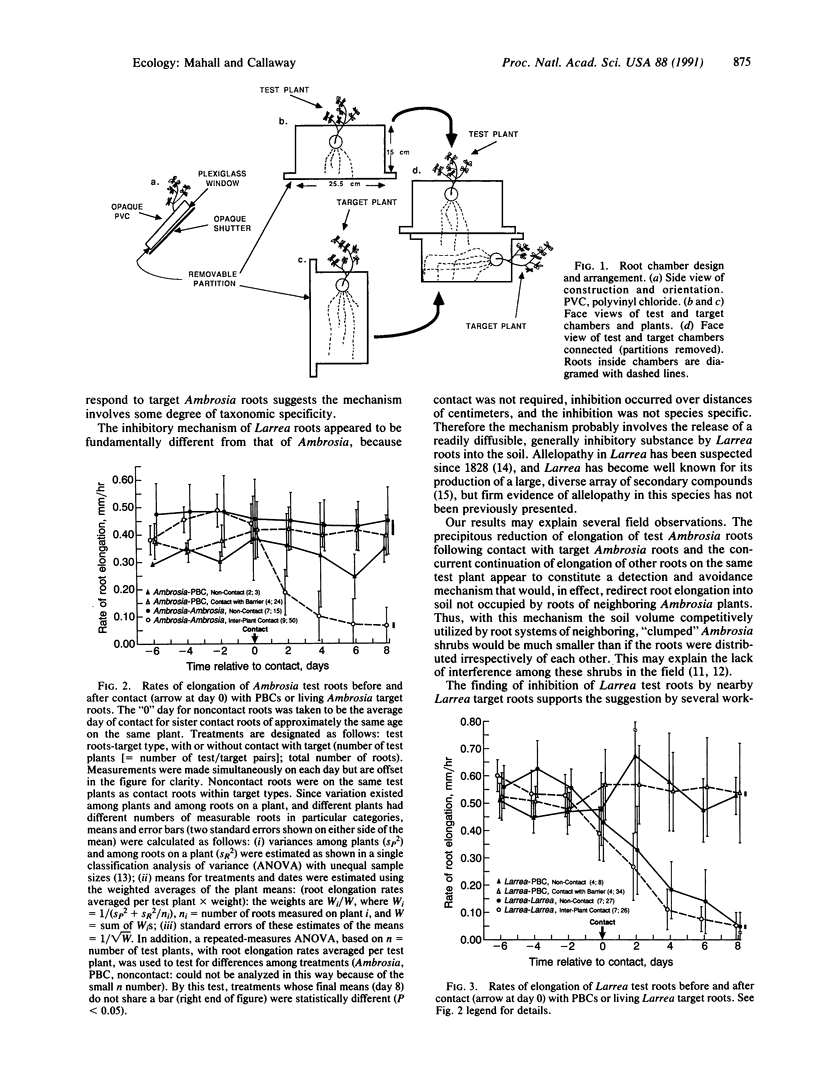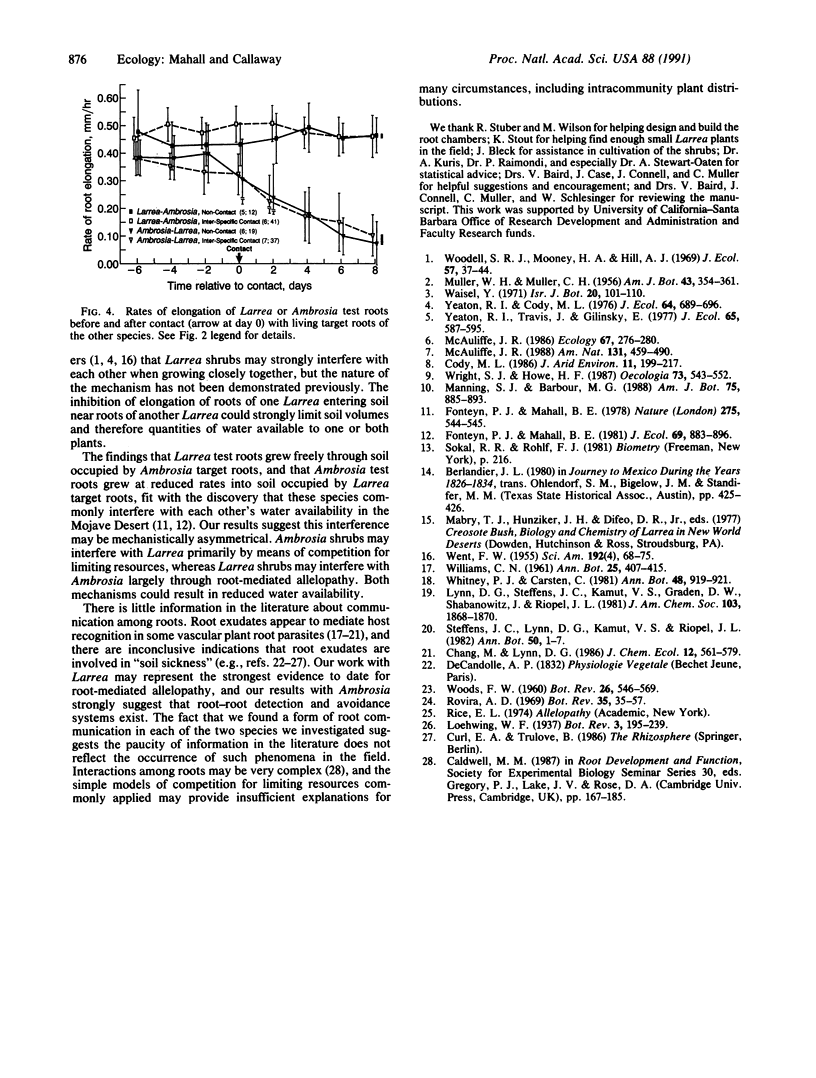Abstract
Descriptive and experimental studies of desert shrub distributions have revealed important questions about the mechanisms by which plants interact. For example, do roots interact by mechanisms other than simple competition for limiting resources? We investigated this question using the desert shrubs Ambrosia dumosa and Larrea tridentata grown in chambers that allowed observation of roots during intraplant and intra- and interspecific interplant encounters. Two types of root "communication" were revealed. Ambrosia root systems appear to be capable of detecting and avoiding other Ambrosia root systems, whereas Larrea roots inhibit Larrea and Ambrosia roots in their vicinity.
Full text
PDF





